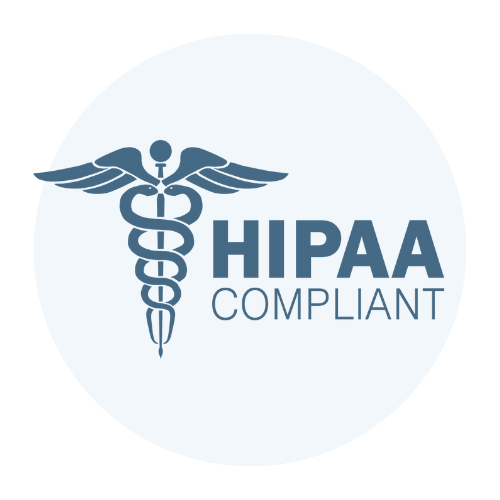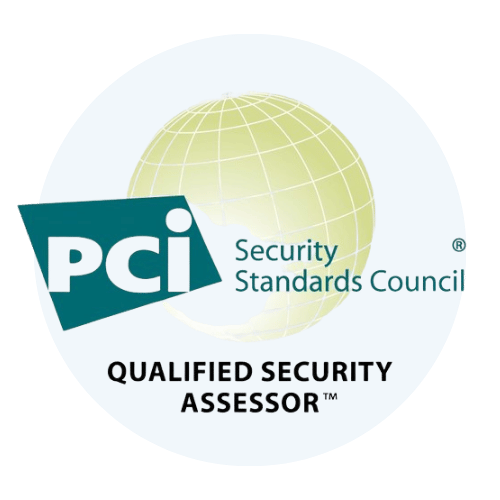Future-Proofing Your Business Against Cyber Threats
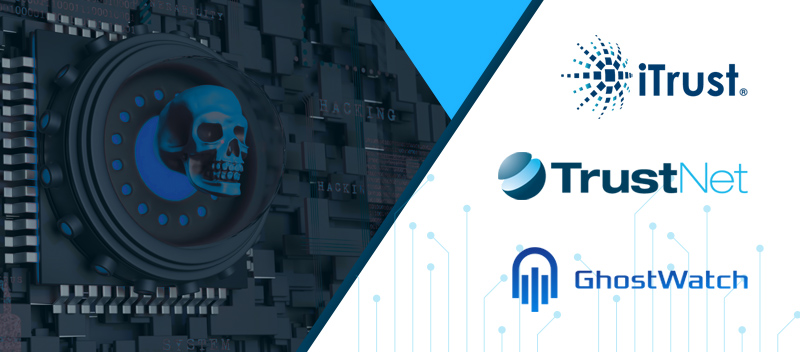
Imagine this: 61% of organizations are worried that AI-powered attacks could jeopardize sensitive information. It’s a daunting thought in today’s rapidly evolving threat landscape. As cybersecurity professionals, IT decision-makers, and leaders in organizations like yours, you know the stakes are high. The pace of technological change can be dizzying, with 33% of you struggling to keep up with emerging threats. Blind spots from point tools continue to hinder 91% of respondents, affecting threat prevention. And let’s not forget the complexity and fragmentation in cloud environments, cited by 54% as a critical data security concern. At TrustNet, we understand your struggles and are here to help. By leveraging our expertise, you can future-proof your business against these cyber threats, ensuring robust protection for your most valuable assets. Emerging Cyber Threats First, let’s delve deeper into the significant cyber threats and trends you should know about: — Increasing Sophistication Cyberattacks are growing more complex and cunning: Advanced Techniques: Attackers are employing sophisticated methods like polymorphic malware, which can change its code to evade detection. Strategic Innovations: New tactics are exploited, such as zero-day vulnerabilities, where hackers attack software flaws before they are patched. State-Sponsored Amplification: Nation-state actors bring resources and organization, making their attacks particularly formidable. — Diverse Attack Vectors Cyber threats are now multifaceted: Malware, Ransomware, and DDoS: These attacks can be layered, creating a multi-pronged threat. Phishing and Social Engineering: Starting points for many breaches, these tactics exploit human psychology to gain access. — Target Variety The net of cyber threats is widening: Beyond Big Targets: While large corporations remain at risk, hackers are increasingly targeting smaller businesses due to perceived weaker defenses. Healthcare and Education: These sectors are appealing targets due to the sensitive data they handle and often inadequate security measures. Personal Information: With the rise of big data, personal information is a lucrative target for theft and resale. — Supply Chain Attacks Supply chain attacks have become a prominent concern: Infiltration Tactics: Attackers target third-party vendors or suppliers, exploiting their access to infiltrate primary targets. This method often bypasses traditional security defenses, as these vendors are usually trusted partners. Impact on Industries: Once inside, attackers can modify software updates or implant malicious code, affecting a wide range of industries. The consequences can be severe, leading to data breaches, financial losses, and operational disruptions. — IoT Vulnerabilities The rise of Internet of Things (IoT) devices has introduced new vulnerabilities into the digital ecosystem: Security Gaps: Many IoT devices often lack encryption, have default passwords, and are rarely updated, creating easy entry points for cybercriminals. Exploitation Potential: Once compromised, IoT devices can be harnessed for a variety of malicious purposes. They can serve as gateways to larger networks, allowing attackers to infiltrate and gather sensitive information. — AI and Machine Learning in Attacks The future of cyber threats is AI-driven: Automated Processes: AI can conduct attacks at a scale and speed previously unattainable. Enhanced Phishing: Machine learning enables the creation of highly personalized and convincing phishing attacks. Proactive Threats: AI can identify and exploit vulnerabilities before they are widely recognized. By comprehending these evolving threats, you can implement strategic defenses to safeguard your organization. Learn more about our Managed Detection and Response services Here Building a Resilient Security Posture Building resilience is not limited to defensive actions; it is a mindset and approach that develops in response to the changing threat landscape. Below, we will discuss some fundamental strategies for strengthening your organization’s security. Implementing Robust Cybersecurity Frameworks Laying a strong foundation with a robust cybersecurity framework is crucial. By adopting standards such as ISO 27001 or the NIST Cybersecurity Framework, you provide your organization with a structured approach to managing risks effectively. These frameworks not only ensure compliance but also foster a secure environment by: Offering comprehensive guidelines to safeguard data. Helping to establish consistent security policies. Ensuring your defenses are aligned with the latest best practices. Conducting Regular Risk Assessments Understanding where your vulnerabilities lie is half the battle. Regular risk assessments allow you to: Identify potential weaknesses before they can be exploited. Prioritize risks, directing resources where they’re most needed. Develop targeted strategies to mitigate identified threats. Prioritizing Employee Training Your employees are not just staff—they’re your first line of defense against cyber threats. It’s vital to: Conduct regular training sessions to boost awareness. Embed cybersecurity into your corporate culture with interactive workshops. Prepare your team to recognize and counteract phishing and other common tactics. Developing an Incident Response Plan Despite the best preventive measures, breaches can still occur. A well-defined incident response plan is essential and should: Outline clear, actionable steps for identifying, containing, and eradicating threats. Ensure that your team can respond swiftly to minimize damage. Be regularly tested and updated to remain effective against new threats. Embracing Continuous Improvement and Adaptation The nature of cyber threats is ever-changing, and so must your strategies. Commit to a cycle of continuous improvement by: Regularly reviewing and updating your security measures. Staying informed about emerging technologies and threat trends. Being ready to adapt your strategies to turn potential threats into opportunities for growth. Embracing these principles ensures a secure and resilient future for your organization against the backdrop of an ever-evolving threat landscape. TrustNet’s Approach to Future-Proofing At TrustNet, our methodology hinges on a blend of innovation and reliability. We’re committed to delivering top-notch cybersecurity solutions, a commitment that’s earned the trust of businesses worldwide. GhostWatch: Your Shield in the Digital World GhostWatch is at the forefront of our managed compliance and security services. It’s designed to instill confidence by delivering world-class protection backed by industry-leading technology and a team of highly skilled experts available 24/7. Here’s what GhostWatch offers: Affordable Security: Every business, regardless of size, deserves access to strong security and compliance solutions. Reliability: Our services are dependable, providing consistent protection that you can count on. Transparency: We maintain clear pricing structures with flexible terms, ensuring you understand exactly what you’re investing in. Effectiveness: Always a step ahead, our technologies and services offer robust
Safeguarding the Digital Economy: A Deep Dive into Fintech Cybersecurity
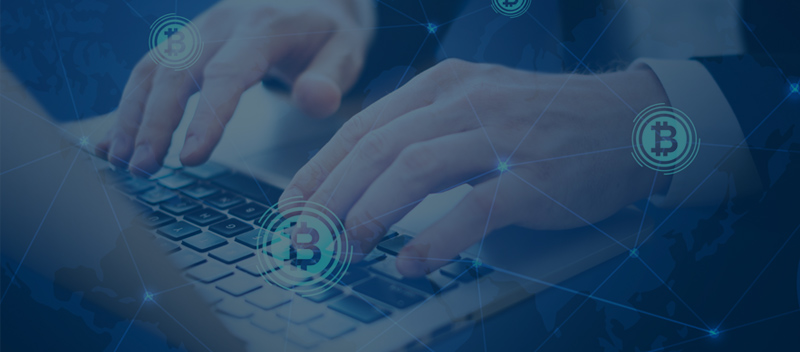
As the fintech industry continues its rapid growth, companies are redefining how you handle money with innovations like mobile payments and blockchain technology. These advancements are becoming the new norm, driving a significant shift in the digital economy. However, with this progress, there’s a rise in unique cybersecurity risks specifically targeting the fintech sector. At TrustNet, we understand that fintech cybersecurity is crucial and requires constant attention and advanced solutions. This guide delves into the world of fintech cybersecurity, highlighting best practices, emerging threats, and pioneering strategies to help protect the digital economy and keep your assets secure. The Unique Landscape of Fintech Cybersecurity In the ever-evolving world of fintech, cybersecurity is more than just a buzzword — it’s a crucial aspect of your business operations. Data Sensitivity Your financial data isn’t merely figures; it’s a treasure trove for cybercriminals. Financial data security is paramount because a breach can led to severe consequences, namely, identity theft, financial losses, and a tarnished reputation. In recent years, we’ve seen high-profile breaches where customers’ sensitive information was exposed. Such incidents underscore the importance of robust data security measures. Regulatory Compliance Fintech isn’t for the faint-hearted, especially when it comes to regulations. Fintech regulatory compliance means keeping up with a constantly shifting set of rules aimed at protecting your data and ensuring fair play. Key regulations like the General Data Protection Regulation (GDPR) set stringent guidelines on how you must handle personal data, emphasizing transparency and user consent. Meanwhile, the Payment Card Industry Data Security Standard (PCI DSS) mandates strict security protocols to safeguard payment card information. Emerging Technologies Innovation is the heartbeat of fintech, with technologies like blockchain and AI leading the charge. However, with great power comes great responsibility: Blockchain: The decentralized nature of blockchain offers enhanced security by eliminating a single point of failure. But this also introduces new vulnerabilities, such as the risk of attacks where malicious entities gain control of the network. Smart contracts, while automating processes, can be exploited if not coded securely. Artificial Intelligence: AI is a double-edged sword in cybersecurity. On one hand, AI can bolster your defenses by identifying threats faster than traditional methods. On the other hand, it can be weaponized by attackers to create sophisticated phishing schemes or to bypass security protocols. By understanding the unique cybersecurity landscape of fintech, you not only protect your assets but also position your business to thrive in this dynamic digital world. Learn more about our Managed Security Services Here Key Cybersecurity Threats in Fintech Cybersecurity threats are a major concern in the fast-moving world of fintech, and staying aware of them is key to maintaining trust and security. — Phishing and Social Engineering Phishing attacks and social engineering tactics are rampant, aiming to deceive both fintech customers and employees. These threats exploit human psychology, tricking people into divulging sensitive information. Most of the time, this email looks like it’s from your bank, urging you to verify your account details. — Data Breaches Data breaches are a violation of trust rather than merely a technological error. A breach of client data may result in large financial losses as well as harm to the public perception of your business. Imagine the impact on customer confidence when their personal information is leaked. — Third-Party Risk Management Managing risks associated with third-party vendors is another critical aspect of fintech cybersecurity. With numerous partners and service providers involved, the fintech ecosystem is inherently complex. Third-party risk management involves ensuring that these partners adhere to the same security standards as your organization. By addressing these critical cybersecurity threats directly, you can protect your fintech operations and safeguard customer trust. Essential Cybersecurity Measures for Fintech Navigating the fintech landscape means staying a step ahead of potential threats. Here are some essential cybersecurity measures to protect your business and your customers: 1. Strong Authentication and Access Controls Authentication and access controls are crucial for safeguarding sensitive data. Implementing multi-factor authentication and strict access permissions can significantly reduce unauthorized access. Think of them as the lock and key to your digital assets, ensuring only the right people have entry. 2. Encryption In the digital age, data is the lifeblood of your operations. Encryption acts as your first line of defense, protecting data both at rest and in transit. Whether it’s customer records or transaction details, encryption ensures that data remains confidential and secure. 3. Regular Security Assessments Security assessments help you identify vulnerabilities before they become threats. Regularly reviewing your security posture allows you to address risks proactively. It’s akin to a routine health check-up for your systems, ensuring any weaknesses are patched up promptly. 4. Incident Response Planning Even with the best defenses, incidents can occur. Having a robust incident response plan is vital for mitigating the impact of cyberattacks. It’s about knowing who to call and what steps to take when things go awry. A well-defined plan minimizes downtime and damage, helping you recover swiftly and maintain customer trust. Leveraging Technology for Enhanced Security While we mentioned that technologies like AI and blockchain come with their own challenges, this section focuses on how their benefits can significantly outweigh the negatives. Let’s explore how innovations like AI and blockchain are revolutionizing cybersecurity today. AI and Machine Learning Harnessing the power of AI and machine learning in cybersecurity allows for advanced threat detection and prevention. These technologies work tirelessly behind the scenes, identifying anomalies that signal potential threats. AI and machine learning enhance your ability to detect and respond to threats swiftly, safeguarding your business and customer data. Threat Detection: AI algorithms analyze large volumes of data to spot unusual patterns, providing early warnings of cyber threats. Anomaly Detection: Machine learning models learn from historical data to identify deviations that might indicate security breaches. Fraud Prevention: Predictive analytics help anticipate fraudulent activities, allowing you to take preemptive actions. Blockchain Technology Blockchain technology is revolutionizing transparency and data security. Blockchain improves security by decentralizing data storage, which almost eliminates the possibility of a single point
Elevate Cyber Defense: GhostWatch’s Cutting-Edge Risk Management Solutions
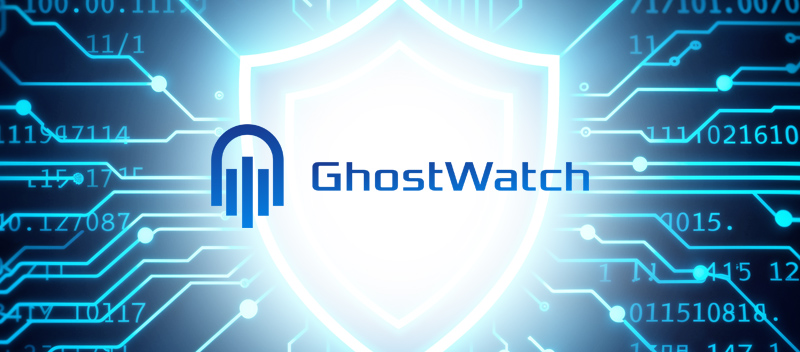
Organizations today still face a great deal of difficulty protecting their assets in the face of increasingly sophisticated cyber threats. As these threats evolve, the demand for advanced risk management solutions is more critical than ever. Enter GhostWatch—a cutting-edge cybersecurity solution designed to empower businesses to stay ahead of evolving threats. By leveraging state-of-the-art technologies, GhostWatch not only addresses the complexity of cybersecurity threats but also provides organizations with the tools and expertise needed to manage risks. This feature article explores how GhostWatch integrates advanced risk management techniques, enabling organizations to gain a comprehensive understanding of their security posture and proactively mitigate risks. The Limitations of Traditional Methods Relying on traditional risk management methods can leave organizations vulnerable to sophisticated threats. These conventional approaches, often rooted in manual processes and outdated assessments, struggle to keep pace with the dynamic nature of today’s cyber environment. Traditional risk analysis techniques, such as spreadsheets and manual evaluations, present a series of challenges: Time-consuming and Resource-intensive: The manual nature of these processes demands significant time and effort, pulling valuable resources away from more strategic initiatives. This not only slows down response times but also increases the likelihood of missing critical vulnerabilities. Human Error and Bias: With data management and interpretation left to individuals, there is a heightened risk of errors and subjective biases. These can distort findings and lead to misinformed security decisions. Lack of Granularity: Traditional methods often fail to capture the nuanced differences between risks. For example, the financial impact of a cybersecurity breach can vary greatly depending on the attack’s scale and the sensitivity of the compromised data. Without accounting for these factors, risk assessments can be misleading. Inadequate Consideration of External Factors: Many traditional approaches overlook significant external influences like market shifts or regulatory changes, which can dramatically alter risk profiles. This oversight can result in a skewed perception of potential financial impacts. Over-reliance on Historical Data: While historical data provides a foundation, it often doesn’t reflect current technological advancements or market dynamics. This reliance can render risk assessments obsolete, leaving organizations unprepared for emerging threats. By embracing innovative technologies such as GhostWatch, organizations can gain a clearer, more comprehensive understanding of their security landscape, ensuring they remain resilient against evolving threats. Learn more about our Managed Security Services Here Introducing GhostWatch: A Game-Changer in Risk Management GhostWatch stands out as an innovative solution, redefining how organizations manage risks. By leveraging advanced data analytics, GhostWatch transforms raw security data into actionable insights, enabling businesses to stay ahead of potential threats. — Advanced Data Analytics At the heart of GhostWatch is its ability to harness advanced data analytics. This robust feature helps obtain a thorough understanding of an organization’s security landscape by collecting and analyzing massive volumes of security data. GhostWatch ensures security teams have access to up-to-date information without putting them under the strain of manual data entry by automating data collection, which makes the process precise and efficient. — Continuous Threat Monitoring In a world where cyber threats evolve by the second, real-time monitoring is crucial. GhostWatch is a leader in threat monitoring, constantly checking systems for flaws and emerging risks. By taking a proactive stance, companies may ensure that issues are handled before they develop and minimize possible harm by responding quickly. — Risk Prioritization Framework Understanding that not all risks carry the same weight, GhostWatch employs a sophisticated risk prioritization framework. Security teams can concentrate their efforts where they are most required thanks to this methodology, which assesses hazards according to their likelihood and severity. Through strategic resource allocation, businesses may improve their entire security posture by efficiently prioritizing threats. GhostWatch turns risk management from a difficult task into a simple, effective procedure. With its cutting-edge capabilities, it gives businesses the confidence to confidently navigate the constantly shifting cybersecurity landscape while providing a strong defense against new and emerging threats. Deep Dive: Advanced Techniques with GhostWatch GhostWatch provides a comprehensive suite of tools to assist businesses in strengthening their defenses. Here’s a closer look at how these techniques serve your cybersecurity strategies: 1. Security Monitoring GhostWatch’s intuitive dashboard delivers full visibility into threats, incidents, and compliance management, ensuring continuous oversight. With Security Event Management, it efficiently monitors every event using SIEM, event correlation, vulnerability assessments, and intrusion detection. 2. Threat Management Our platform excels in synchronizing threat detection, incident response, and management for swift remediation. Advanced Endpoint Threat Detection and Prevention, alongside Intrusion Detection and Ransomware Detection, ensure that threats are identified and mitigated promptly. 3. Vulnerability Management GhostWatch proactively detects and assesses vulnerabilities in critical assets, assigning risk factors per the Common Vulnerability Scoring System. It continuously identifies insecure configurations and unpatched software through on-demand and scheduled scanning. 4. Threat Intelligence Connected to a global network of over 100,000 contributors across 140 countries, GhostWatch provides up-to-date threat intelligence, detecting global threats and prioritizing responses. It excels in Data Exfiltration Detection, Botnet Detection, and Command-and-Control Traffic Identification. 5. Network Security Ensure full network security with comprehensive monitoring and intrusion detection. Built-in asset discovery tools allow for real-time inventory and monitoring of network devices, while behavioral monitoring captures system activity to identify anomalies. 6. Log Management GhostWatch performs advanced log analysis, offering actionable intelligence and threat alerts with integrated SIEM functionality. Its multifunctional reporting capabilities ensure raw log visibility and tamper-proof storage. 7. Compliance Management Supporting compliance with major regulations such as SOC, PCI DSS, ISO 27001, HIPAA, and more, GhostWatch simplifies adherence to diverse compliance requirements. GhostWatch’s advanced capabilities transform cybersecurity from a reactive process into a proactive strategy. The Power of Automation and Orchestration GhostWatch harnesses the power of automation and orchestration to streamline risk management processes and enhance security operations efficiency. Here’s how it transforms these critical areas: Streamlined Risk Management Processes Task Automation: GhostWatch automates routine tasks, integrating seamlessly with your existing systems. This capability not only saves valuable time for security teams but also reduces the potential for human error. Workflow Simplification: The platform simplifies complex workflows, allowing for a more agile
Back to School: Educating Teams on Cybersecurity Risks

As the leaves start to fall and the school year begins, students should not be the only ones gearing up for new lessons. For organizations, this season offers a great chance to revisit and refresh their cybersecurity awareness training. In today’s tech-driven world, having strong cybersecurity knowledge is more important than ever. With cyber threats evolving constantly, providing ongoing cybersecurity education for employees is essential to keep sensitive information safe. In this guide, we will explore strategies for corporate trainers and educational coordinators to create engaging and effective cybersecurity training that helps employees identify, mitigate, and stay vigilant against cyber threats. The Cybersecurity Challenge: Why It Matters With cyber threats on the rise, from phishing scams to ransomware, businesses face greater risks daily. A successful cyberattack can have consequences, from financial losses to reputational damage. Here are some challenges every business must know: Rising Threats: Cyberattacks and data breaches are becoming alarmingly common. From phishing scams to ransomware, these threats are evolving in complexity and frequency. Every click and download can be a potential gateway for malicious activity, making vigilance more important than ever. Financial Losses: A single breach can result in hefty financial damages, including fines and the cost of recovery. Reputational Damage: Trust is hard to build and easy to lose. A cyberattack can severely tarnish an organization’s reputation, causing long-term harm. Regulatory Compliance: With regulations tightening globally, non-compliance due to a breach can lead to legal repercussions. Employee Role in Defense Employees are on the frontline of defense against cyber threats. Their role is pivotal in maintaining security: Identification: Recognizing suspicious activity quickly can prevent potential breaches. Mitigation: Proper training empowers employees to take immediate action against threats, reducing risk. Continuous Learning: As cyber threats evolve, so should employee awareness and skills in cybersecurity. Incorporating these elements into your cybersecurity strategy ensures a comprehensive defense, making both the organization and its employees more resilient against cyber threats. For more on our Cybersecurity Risk Assessments services, Click Here Engaging Your Team: Strategies for Effective Training Keeping your team engaged in cybersecurity training can be challenging, but with the right strategies, it can become an integral part of your organization’s culture. Here’s how you can make training more impactful: 1. Variety in Training Approach Interactive Workshops: Hands-on sessions where employees can practice their learning in real time. Cybersecurity Simulations: Mock exercises help test and enhance employees’ reactions to threats. Online Modules: Flexible learning that employees can complete at their own pace. Gamification: Turn cybersecurity learning into a fun, game-like experience to encourage active participation. 2. Practical and Relevant Training should be more than just theory; it should be directly applicable to what your employees do every day. Focus on: Cybersecurity Training: Provide scenarios and exercises that mirror real-world tasks they encounter. Cybersecurity Best Practices: Teach strategies and habits that employees can integrate into their daily routines to enhance security. Beyond Training: Fostering a Culture of Awareness Training is just the beginning. To truly safeguard your organization, you must cultivate an ongoing culture of cybersecurity awareness. — Regular Communication A robust cybersecurity communication plan is vital. Keeping everyone informed about the latest risks and updates to company policies ensures that cybersecurity remains a top priority. Regular communication can include: Newsletters: Share updates on emerging threats and protective measures. Meetings: Regularly scheduled discussions to address concerns and reinforce best practices. Alerts: Immediate notifications about new threats or policy changes. — Phishing Simulations Conducting phishing simulations is an effective way to test employees’ vigilance in a safe environment. These exercises help identify weaknesses and provide insights into areas needing improvement. Benefits include: Awareness: Employees become more alert to potential scams. Feedback: Gain valuable information on how employees handle suspicious emails. Improvement: Tailor additional training to address identified gaps. — Recognition and Rewards Acknowledging those who excel in cybersecurity practices boosts morale and encourages a security-conscious mindset. Consider implementing: Employee Recognition for Cybersecurity: Highlight individuals or teams that consistently demonstrate strong awareness. Incentives: Offer rewards, such as gift cards or additional vacation days, for exemplary behavior. Public Acknowledgment: Share achievements in company-wide communications to inspire others. By fostering a culture where cybersecurity is part of everyday conversation and behavior, your organization can enhance its resilience against threats and ensure that every team member plays a role in maintaining security. TrustNet: Your Cybersecurity Training Partner TrustNet ensures your team is equipped with the knowledge and skills needed to navigate the complex landscape of cybersecurity. 1. Expertise TrustNet is renowned for its expertise in delivering effective cybersecurity awareness training solutions. We are aware that when it comes to cyber risks, your workers are both your most valuable resource and your most susceptible point of entry. Our goal is to turn your staff into a strong line of defense against cyberattacks using our solutions. 2. Services and Resources Our Enterprise Awareness Training Platform is a comprehensive solution, combining immersive online education with testing to deliver top-notch security awareness content and phishing training. Key features include: Customized Cybersecurity Training: We design our programs to meet your company’s specific needs, ensuring that the instruction is applicable and effective. Expert Trainers: The training is interesting and successful because of the real-world expertise and insights that our team of seasoned professionals brings to the table. Ongoing Support: Beyond the initial training, we provide continuous support to keep your team updated on the latest threats and best practices. User Training: A wealth of educational materials, from engaging articles and graphics to interactive games and movies. User Phishing: Advanced phishing, vishing, and smishing simulations with thousands of templates to choose from. Reporting: Detailed reporting options that provide valuable insights for management, ensuring you’re always informed about your team’s progress. TrustNet’s training solutions and customized programs ensure that your organization remains resilient, with employees well-prepared to face the ever-evolving landscape of cyber threats. Empowering Your Team for a Secure Future Fostering a robust cybersecurity culture within your organization is not just beneficial —it’s essential. Ongoing team education and awareness are vital in
Comprehensive Guide to Threat Management: Protecting Your Digital Assets
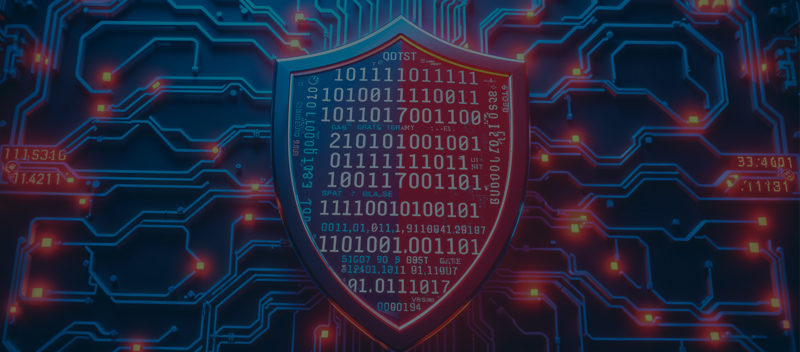
Did you know that there were 2,365 cyberattacks in 2023, with 343,338,964 victims? 2023 saw a 72% increase in data breaches since 2021, which held the previous all-time record. This statistic underscores a critical reality: effective threat management is no longer optional. We’ll examine the basic principles of threat management in this extensive guide, including the various kinds of threats you may encounter and the countermeasures that are available. Our goal is to provide you with the information you need to safeguard your business against any security breaches and remain secure in the digital era. What is Threat Management? The main goal of threat management is to keep your digital environment safe. It’s the methodical process of locating, assessing, and dealing with possible security risks that might endanger your business. Why does this matter to you? Well, cyber threats are always changing in today’s fast-paced digital environment. This might be an intimidating task if you’re managing an enterprise. Here’s where threat management truly shines: — Data Security It ensures that your critical data — like customer details and financial information — remains confidential and protected from cybercriminals. By proactively managing threats, you reinforce the security of your data, making it significantly harder for unauthorized access. —Operational Continuity By tackling threats early, you can keep your business operations smooth and uninterrupted, even in the face of potential cyber-attacks. With effective threat management, you can identify such threats before they affect your systems, ensuring that your business remains operational, and clients’ needs are met without disruption. — Reputation Protection Your brand’s reputation is on the line. Effective threat management helps maintain trust and reliability, showing customers that their information is secure with you. When you manage threats well, you demonstrate your commitment to their security, which helps in building long-lasting trust and client loyalty. — Cost Savings Addressing security issues proactively is often less expensive than dealing with the aftermath of a breach. Investing in efficient threat management can save you significant amounts in potential fines, legal fees, and damage control. Learn more about our Managed Detection and Response, Here Types of Threats In the world of threat management and security, understanding the types of threats you’re up against is crucial. Let’s dive into some common and emerging threats that businesses must navigate. Common Threats Malware: This encompasses various malicious software, including viruses, worms, and trojans, designed to damage or disrupt your systems. It’s like a digital pest, always looking for a way in. Phishing: Watch out for these deceptive emails or messages that look legitimate but aim to steal sensitive information, like passwords and credit card numbers. Phishing is a classic scam but remains incredibly effective. Ransomware: This nasty type of malware locks you out of your own files and demands a ransom to regain access. It’s not just a financial threat; it can paralyze your operations. Social Engineering: Attackers use manipulation to trick you into divulging confidential information. It’s less about technology and more about exploiting human psychology. Emerging Threats As technology advances, so do the threats. Here are some to keep on your radar: AI-Powered Attacks: Using artificial intelligence, attackers can automate and enhance the sophistication of their attacks, making it harder to detect and fend off. It’s a game of cat and mouse, and AI is leveling the playing field for cybercriminals. IoT Vulnerabilities: With the rise of Internet of Things devices, from smart refrigerators to industrial sensors, each connected device represents a potential entry point for threats. Ensuring their security is paramount in today’s digital landscape. Understanding these threats is the first step in effective threat management and ensuring your business is protected against both known and emerging security challenges. Threat Management Solutions Having the proper threat management systems in place is crucial for protecting your digital assets. Let’s examine a few essential tools you should consider. – Firewalls Think of a firewall as your first line of defense. It prevents unwanted access by serving as a barrier between your internal network and the outside world. A firewall provides protection against unauthorized access by screening and rerouting traffic according to pre-established security rules. – Intrusion Detection and Prevention Systems (IDPS) These systems are like vigilant guards, continuously monitoring your network for suspicious activity. Thanks to IDPS’s real-time detection and blocking capabilities, threats may be neutralized before they have a chance to do damage. – Antivirus and Antimalware Software Viruses and malware are constant threats, and having robust antivirus and antimalware protection is a must. These programs scan your systems for known threats, helping to neutralize them before they can inflict damage. – Data Loss Prevention (DLP) Protecting sensitive data is crucial. DLP solutions help prevent data breaches by monitoring, detecting, and blocking unauthorized data transfers. This ensures your confidential information doesn’t fall into the wrong hands. – Security Information and Event Management (SIEM) SIEM solutions collect and analyze security data across your network. They provide a comprehensive view of your security posture, helping you quickly identify and respond to potential threats. With SIEM, you can gain insights and maintain a proactive security strategy. By implementing these threat management solutions, you equip your business with the tools needed to protect against a wide array of threats. Threat Management Services Navigating the complex threat management landscape can be daunting, but you don’t have to go at it alone. Outsourcing to a Managed Security Services Provider (MSSP) like TrustNet can offer invaluable support. Let’s explore the services that can bolster your security strategy. Managed Security Services Provider (MSSP) Comprehensive Security Monitoring: TrustNet provides around-the-clock surveillance, detecting and mitigating threats as they arise. This proactive approach helps prevent breaches before they escalate. Advanced Threat Management: With cutting-edge technologies, TrustNet offers tailored solutions that adapt to the ever-evolving threat landscape. This includes identifying patterns and anomalies that could indicate potential attacks. Network Security and Compliance: TrustNet ensures your network is fortified against unauthorized access. We also help you navigate the complexities of regulatory compliance, ensuring that your security measures meet industry
Mastering Cybersecurity Risk Assessment

Strong security measures are more important than ever as cyber-attacks become more sophisticated and frequent. Effective cybersecurity strategies are built on the critical process of risk assessment, which forms the basis for protecting sensitive data and systems from possible breaches. This blog post will equip IT professionals and security analysts with the essential knowledge and techniques needed to master cybersecurity risk assessment, ensuring their organizations remain secure and resilient. What is Cybersecurity Risk Assessment? Cybersecurity risk assessment is a strategic process that involves identifying, assessing, and prioritizing potential threats to an organization’s digital assets. By understanding these risks, organizations can develop tailored strategies to safeguard their data and systems against cyberattacks effectively. Key Benefits of Regular Risk Assessments Engaging in regular risk assessments offers a host of benefits for organizations: Enhanced Security Posture: By pinpointing vulnerabilities, organizations can bolster their defenses, creating a more resilient security infrastructure. Minimized Risk of Data Breaches: Proactively managing risks reduces the likelihood of unauthorized access to sensitive data, thereby averting costly breaches. Improved Regulatory Compliance: Routine assessments ensure adherence to industry standards and regulations, helping to avoid fines and legal complications. Optimized Resource Allocation: Understanding risk landscapes allows organizations to allocate their resources more strategically, focusing on areas of greatest need. Incorporating regular risk assessments into your cybersecurity framework not only strengthens your defenses but also boosts operational efficiency. With TrustNet’s extensive experience in conducting these assessments and our ability to deliver tailored solutions, your organization can stay secure and agile in the face of evolving cyber threats. For more on our Cybersecurity Risk Assessments services, Click Here The Risk Assessment Process Navigating the cybersecurity world can feel overwhelming, but breaking it down into manageable parts makes all the difference. Let’s dive into the essential steps of a risk assessment process that keeps your organization’s digital assets secure. — Identify Assets Start by figuring out what you need to protect. It’s like taking stock of your prized possessions—data, systems, applications. By identifying and categorizing these assets, you can focus your security efforts where they count the most. — Threat Identification Knowing what threats are out there is key. Cyber threats vary from malware to more insidious phishing and ransomware attacks. Understanding these dangers helps you set up defenses that are ready for action before the threats strike. — Risk Analysis Once you know the threats, it’s time to analyze the risks they pose. This involves looking at how likely each threat is to occur and the potential impact on your assets. Tools like “likelihood score” and “impact score” can help paint a clear picture, guiding you to spot the most pressing risks. — Risk Prioritization Not every risk needs your immediate attention. Prioritize them based on severity and likelihood. By focusing on the most significant threats first, you ensure your efforts are strategic and effective, tackling the big issues head-on. — Risk Mitigation With priorities set, it’s all about mitigating those risks. Whether it’s applying software patches or beefing up security measures, the goal is to bring risks down to a level you can manage, keeping your important assets shielded from harm. — Risk Monitoring and Review Remember, the cybersecurity landscape is always changing. Regularly reviewing and monitoring risks is crucial to staying ahead. By updating your assessments, you can adapt to new threats and maintain strong defenses. By following these steps, you create a robust strategy that not only secures your organization now but also prepares you for the challenges ahead. Common Risk Assessment Techniques When it comes to assessing risks, there are various techniques at your disposal, each offering unique insights and approaches. Let’s explore some popular ones that can help you navigate the complexities of risk management. Qualitative Techniques Brainstorming: This technique involves gathering a group of stakeholders to generate ideas about potential risks. It’s a collaborative and creative process that can uncover risks you might not immediately think of. However, it can sometimes lead to subjective outcomes, as it heavily relies on the participants’ perspectives. Expert Judgment: Tapping into the knowledge of seasoned professionals can provide valuable insights. Experts can assess risks based on their experience and intuition. While this approach adds credibility, it can be limited by the expert’s bias or blind spots. SWOT Analysis: Standing for Strengths, Weaknesses, Opportunities, and Threats, SWOT Analysis is a strategic planning tool that helps identify internal and external factors that could impact objectives. While it’s excellent for gaining a broad overview, it can sometimes oversimplify complex issues without deeper analysis. Quantitative Techniques Failure Modes and Effects Analysis (FMEA): This method is more structured and data-driven. It involves identifying potential failure modes, evaluating their effects, and prioritizing them based on severity, occurrence, and detection. FMEA provides a clear, numerical basis for decision-making. However, it can be time-consuming and requires accurate data to be truly effective. Monte Carlo Simulation: This technique uses statistical methods to model and analyze the impact of risk. By running numerous simulations, it provides a probability distribution of possible outcomes, which helps in understanding potential risks and their impacts. Its main challenge is that it requires significant computational resources and expertise to interpret the results effectively. Decision Tree Analysis: Offering a visual representation of decisions and their possible consequences, Decision Tree Analysis helps in evaluating different risk scenarios. It’s beneficial for making informed choices in uncertain conditions, though it can become complex with numerous branches and possibilities, sometimes leading to oversimplified assumptions. Advantages and Disadvantages Each technique comes with its own set of strengths and weaknesses. Qualitative Techniques: These are generally more flexible and easier to implement quickly. They facilitate open discussions and can adapt to different situations. On the downside, they may lack precision and can be influenced by personal biases. Quantitative Techniques: These offer a more objective and systematic approach backed by data and analysis. They are great for in-depth investigations and can provide measurable results. However, they often require more resources, time, and expertise to execute properly. By understanding these techniques, you can choose the right
Cybersecurity Monitoring: Your Vigilant Sentinel

Even the most sophisticated security systems are being tested by the increased complexity of cybersecurity threats. There has never been a more pressing need for proactive security measures since fraudsters are using more and more sophisticated approaches. Enter cybersecurity monitoring—your vigilant sentinel in this relentless battle. Continuous monitoring is vital to detect and respond to threats in real time, ensuring that your organization remains one step ahead of potential breaches. This comprehensive guide explores the essential aspects of cybersecurity monitoring, providing insights into best practices, advanced technologies, and the value of a vigilant security posture. The Importance of Proactive Monitoring Staying ahead of threats is crucial in the ever-evolving world of cybersecurity. Proactive monitoring offers you peace of mind with its robust capabilities. Let’s dive into why this approach is essential for your organization. — Real-Time Threat Detection Imagine being able to spot threats as they happen. With real-time threat detection, continuous monitoring allows you to do just that. It acts as your eyes and ears, identifying anomalies and suspicious activities the moment they occur. This proactive stance means you’re not just reacting to incidents; you’re ready to tackle them head-on, minimizing potential damage. — Incident Prevention Proactive monitoring isn’t just about reacting—it’s about preventing incidents before they happen. By identifying vulnerabilities early, you can address them before cybercriminals exploit them. Think of it as your security safety net. You avoid the costly aftermath of security breaches by staying one step ahead. — Compliance Adherence Navigating the complex landscape of regulatory compliance can be daunting. We know how important it is for you to meet industry regulations and standards. Continuous monitoring plays a pivotal role in ensuring compliance, and keeping your systems aligned with the necessary requirements. This not only helps you avoid hefty penalties but also strengthens your overall security posture. Incorporating proactive monitoring into your cybersecurity strategy is like having a vigilant sentinel by your side, ready to guard against emerging threats and safeguard your operations. By focusing on real-time threat detection, incident prevention, and regulatory compliance, you ensure your organization is resilient in the face of cyber challenges. Learn more about our Managed Security services, Here Essential Components of Cybersecurity Monitoring When it comes to fortifying your cybersecurity posture, understanding the essential components of monitoring is key. Let’s delve into the critical elements that enhance your defense mechanism. 1. Network Traffic Analysis Imagine your network as a vast, complex roadway system. Network traffic analysis acts as a vigilant traffic monitor, meticulously scrutinizing every data packet that enters and exits your network. You can identify potentially dangerous actions and suspicious activity before they become more serious by doing in-depth network traffic analysis. Your digital environment’s security and integrity depend on you taking this proactive stance. 2. Log Management Every digital interaction leaves a trace—logs. Log management is similar to keeping an exhaustive log of these exchanges. This procedure strengthens your security measures by not only assisting in breach identification but also offering insightful information on averting such instances in the future. 3. Security Information and Event Management (SIEM) Think of SIEM as your centralized security hub. It compiles, examines, and links security events from every device on your network. Serving as a tactical command center, SIEM provides an overview of the security environment around your company. Its capacity to deliver thorough reporting and real-time warnings gives you the opportunity to quickly address risks and guarantee the security of your operations. 4. User and Entity Behavior Analytics (UEBA) Internal threats can often be the most elusive. UEBA is an advanced tool for tracking and evaluating user and object activity. It assists in locating any security risks coming from within your business by spotting departures from typical behavior, such as odd access patterns or data consumption. Thanks to this sophisticated analysis, even a minute or an unusual activity can be identified and dealt with right away. Incorporating these components into your cybersecurity strategy not only strengthens your defense but also provides a holistic approach to threat management. Each element serves a distinct purpose, working together to safeguard your organization against an ever-evolving threat landscape. Advanced Monitoring Techniques It takes a combination of innovation and knowledge to keep ahead of any risks in the always-changing field of cybersecurity. Let’s explore some cutting-edge methods that can strengthen your security protocols and maintain your organization’s resistance to online threats. Artificial Intelligence (AI) and Machine Learning (ML) These technologies excel in automating threat detection and analysis. AI in cybersecurity provides the capability to learn from each new threat, adapting and evolving constantly. ML in cybersecurity allows systems to sift through enormous datasets, identifying patterns and flagging anomalies with remarkable speed and accuracy. This means you can respond to threats almost in real-time, ensuring your defenses are not just reactive but proactive. Behavioral Analytics Consider behavioral analytics as the intuitive part of your security strategy. It goes beyond surface-level monitoring to analyze deeper, more nuanced user behaviors. By focusing on deviations from normal activity—such as unusual login times or accessing atypical files—behavioral analytics can spot threats that might slip past traditional security measures. This approach equips you to address potential issues before they escalate, enhancing your security posture with precision. Threat Intelligence Integration In today’s fast-paced digital world, keeping abreast of emerging threats is non-negotiable. You can make sure that your security plan is up to date with the most recent cyber threats by including threat information feeds. You can now anticipate and get ready for assaults before they come thanks to this integration. With threat intelligence, you’re no longer just reacting to incidents; you’re intelligently positioning your organization to defend against them effectively. By using these cutting-edge monitoring strategies, you may strengthen your present security framework and make sure you’re ready for any obstacles down the road. Overcoming Challenges in Cybersecurity Monitoring Let’s examine some of the main obstacles to cybersecurity monitoring and how to overcome them. Data Overload Data overload is a real issue. With countless logs and alerts pouring in, distinguishing
Enhancing Risk Analysis with GhostWatch
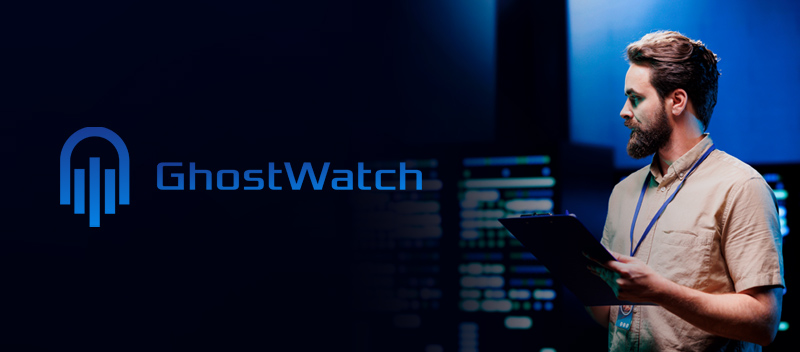
Keeping the digital assets of your business safe should be your first priority in the modern world. Strong risk analysis is essential because cyber attacks are becoming more common and sophisticated. It’s about proactively anticipating problems and skillfully addressing hazards. This blog article examines in more detail how GhostWatch assists businesses in identifying, classifying, and ranking cybersecurity hazards. GhostWatch. a comprehensive risk analysis solution, offers the knowledge and resources you need, regardless of your role—Risk Manager or CISO—to increase security with confidence. The Challenges of Traditional Risk Analysis Traditional risk analysis methods, like using spreadsheets and manual assessments, often come with a set of limitations that can hinder an organization’s ability to effectively manage cybersecurity risks. These methods can be and have: Time-consuming and resource-intensive: Manual processes demand a lot of time and effort, diverting valuable resources away from other critical tasks. Prone to human error and bias: Relying on individuals to manage and interpret data can lead to mistakes and subjective judgments, skewing the results. Lack of granularity: Traditional assessments often lump risks together, missing nuances. For instance, a cybersecurity breach can have varying financial impacts based on factors like the scale of the attack and data sensitivity. Without considering these differences, cost estimations can be off the mark. Inadequate consideration of external factors: Many traditional methods overlook external influences such as market changes or new regulations that can drastically alter risk impact. Ignoring these can lead to a skewed understanding of financial implications. Over-reliance on historical data: While past data can offer insights, it often doesn’t account for current changes in technology or market dynamics. This reliance can result in outdated and inaccurate risk assessments. In summary, while traditional methods have been the backbone of risk analysis, their limitations in today’s rapidly changing environment highlight the need for more advanced solutions like GhostWatch. For more about GhostWatch Managed Security Services, Click Here How GhostWatch Streamlines Risk Analysis GhostWatch offers a smarter way to tackle risk analysis, making the process easier and more effective. Here’s how it can transform your approach: — Automated Data Collection Say goodbye to tedious manual data entry. GhostWatch streamlines this procedure and provides a smooth way of obtaining all-encompassing information. This effectiveness guarantees that you always get access to the most recent data while also saving you time. — Continuous Threat Monitoring Real-time monitoring is revolutionary in cybersecurity, where things move quickly. GhostWatch monitors your system continuously, detecting weaknesses and new threats as they materialize. This proactive strategy minimizes possible harm by enabling prompt intervention. — Risk Prioritization Framework Not all risks are created equal, and GhostWatch understands that. It uses a sophisticated framework to prioritize risks based on their severity and likelihood, so you can focus your resources where they matter most. — Reporting and Compliance In-depth reports are essential for managing compliance and making well-informed decisions. GhostWatch offers thorough reports that not only assist you in adhering to industry requirements but also provide you with the knowledge required to advance your security strategy. By harnessing these features, GhostWatch transforms risk analysis from a daunting task into a streamlined process, empowering you to protect your organization with confidence. GhostWatch vs. Traditional Methods: A Clear Advantage In terms of risk analysis, GhostWatch is distinct from traditional methods. We have created a straightforward comparison table that highlights the main advantages GhostWatch has over more traditional methods to emphasize these differences. Aspect GhostWatch Traditional Methods Time Efficiency Automated processes save significant time. Manual processes are time-consuming. Accuracy Offers high accuracy with precise data analytics. Prone to human error and potential biases. Cost-Effectiveness Reduces costs by streamlining operations. Often requires more resources and manpower. Proactive Threat Detection Continuous monitoring identifies threats as they emerge. Reactive approach, often missing new threats. Not only does GhostWatch revolutionize risk analysis, but it also has distinct benefits above traditional methods. Using automated tools increases accuracy and reduces time spent, making it an affordable option that keeps you ahead of potential risks. TrustNet: The Trusted Partner for Enhanced Risk Analysis As the provider of GhostWatch, TrustNet stands out with our deep expertise and commitment to enhancing risk analysis. Our team is composed of seasoned experts who understand the nuances and challenges of risk management, equipping you with the insights and tools you need to stay ahead. Expertise You Can Count On At TrustNet, we bring years of experience to the table, ensuring that your organization is not just prepared but proactive in its risk management efforts. Our experts work closely with you to customize GhostWatch to fit your unique needs, offering tailored solutions that address your specific challenges. Seamless Implementation and Ongoing Support Implementing GhostWatch is a seamless experience with TrustNet. Our all-inclusive services help you navigate the setup procedure with the least amount of disturbance and the most effectiveness. However, our dedication continues beyond there. You will always have an expert to turn to thanks to our continuous support services, whether you need help with system upgrades or strategic advice on new threats. With the technology and knowledge to protect your organization’s future, TrustNet is committed to helping you make the most of GhostWatch. When you work with us, you get a partner who shares your vision and understands the importance of risk analysis. Unlock Your Security Potential with GhostWatch GhostWatch empowers organizations to transform risk analysis with unparalleled efficiency, accuracy, and cost-effectiveness. By automating complex processes and providing proactive threat detection, GhostWatch ensures that your organization stays ahead of potential risks, reinforcing trust and enhancing operational excellence. Discover how TrustNet can help you harness the full power of GhostWatch to fortify your security posture and achieve regulatory compliance with confidence. Enhance Your Risk Analysis with GhostWatch. Request a Demo today.
2024 Cybersecurity Insights: Elevate Risk Management with Best Practices
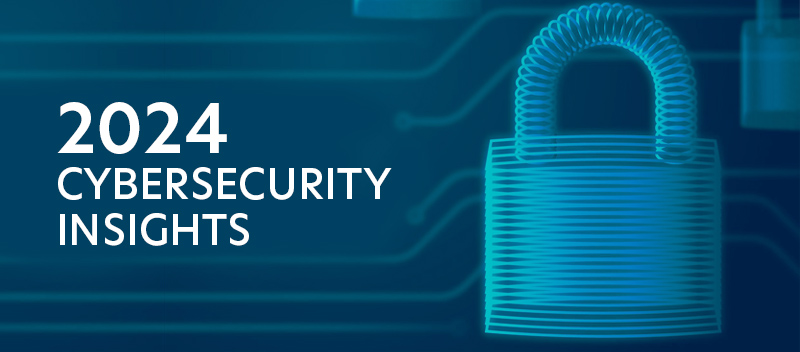
Navigating the cybersecurity landscape in 2024 feels like steering a ship through ever-changing waters. New threats are emerging faster than ever, challenging even the most seasoned security professionals. For CISOs and IT strategists, staying ahead isn’t just beneficial — it’s crucial. As cyber threats become more sophisticated, effective risk management strategies are your best defense. This blog post equips you with the latest best practices and innovative approaches to strengthen your organization’s risk management posture in 2024. The Evolving Threat Landscape: Why We Need to Adapt The threat landscape is not only evolving but doing so at a pace that requires constant vigilance. Here’s a closer look at what’s on the horizon and why adaptation is key: Emerging Threats Deepfakes: These sophisticated digital forgeries have moved beyond novelty status, presenting significant threats. Misinformation campaigns are using them more and more often in an attempt to distort political processes or public opinion. By pretending to be executives during video chats, deepfakes can help commit fraud in the business sector and result in unapproved transactions or data breaches. Supply Chain Attacks: Attacks targeting software supply chains are particularly dangerous because they exploit existing trust relationships. By compromising a trusted supplier, attackers can inject malicious code into legitimate software updates, affecting numerous organizations before the breach is even detected. This ripple effect can lead to widespread data breaches and operational disruptions. Ransomware-as-a-Service (RaaS): This business model for cybercrime lowers the entry barrier for cybercriminals by providing ready-made ransomware tools to those without technical expertise. It allows attackers to execute sophisticated ransomware attacks with relative ease, targeting organizations of all sizes. The commoditization of ransomware increases the volume and complexity of attacks, making them a persistent threat. Shifting Regulatory Landscape The regulatory environment is in flux, with new data privacy regulations on the horizon that could significantly impact risk management practices. Laws that may impose more stringent rules for data management and reporting will need organizations to adjust. To ensure data privacy and prevent severe penalties, these developments call for a review and potential revamp of present compliance practices. Retaining compliance and stakeholder and client trust requires being knowledgeable and flexible. Remote Work Challenges The shift to remote and hybrid work models continues to pose significant security challenges. Here’s what organizations need to focus on: Secure Device Management: With employees accessing company resources from personal devices, ensuring these devices are secure is paramount. Implementing policies for device encryption, regular updates, and endpoint protection can mitigate risks. Protecting Sensitive Data: Remote work increases the risk of data breaches, as sensitive information is accessed from various locations. Solutions such as virtual private networks (VPNs), multi-factor authentication, and data loss prevention tools are essential to safeguard data. Maintaining a Strong Security Posture: Ensuring a consistent security posture across various endpoints requires robust policies and continuous monitoring. Regular security training for employees can help reinforce a security-first mindset, reducing the likelihood of human error leading to security incidents. Adapting to these changes isn’t optional — it’s essential for maintaining a robust cybersecurity posture. As threats and regulations evolve, so do our risk management strategies. 2024 Risk Management Best Practices As we dive deeper into 2024, staying ahead in cybersecurity requires more than just keeping up with technology — it’s about adopting a new mindset. Here are some strategies that can truly make a difference: 1. Prioritize Proactive Measures Let’s face it: reacting to threats after they’ve occurred is like closing the barn door after the horse has bolted. Proactive risk management is about anticipating issues before they arise. Regular risk assessments and vulnerability simulations can help pinpoint weak spots early. This approach not only bolsters your defenses but also instills confidence in your security strategy. 2. Continuous Threat Intelligence Incorporating real-time threat intelligence into your risk assessments is no longer optional—it’s essential. By staying on top of global threat trends, you can tweak your defenses dynamically. This keeps your organization agile and ready to tackle potential threats head-on. 3. Zero Trust Architecture Zero Trust isn’t just a buzzword — it’s a philosophy that’s reshaping cybersecurity. By assuming that every access request is potentially a threat, you enforce strict verification protocols. This means that even if a network is compromised, the damage is contained, keeping your critical assets safe. 4. Focus on People-Centric Security Technology is just one part of the puzzle; people are the other. Cultivating a security-first mindset among your team is crucial. Regular training and awareness programs help employees recognize and avoid threats, turning them into your first line of defense against cyberattacks. 5. Invest in Automation and Orchestration Automation and Security Orchestration Automation Response (SOAR) tools are transforming how we handle cybersecurity. They automate routine tasks and coordinate complex processes, giving your team more time to focus on strategic threats. This not only boosts efficiency but also shortens response times when incidents occur. By embracing these best practices, you’re not just shielding your organization from the threats of 2024 — you’re building a resilient, forward-thinking security ecosystem. Innovative Approaches to Elevate Risk Management Here are some cutting-edge approaches that are reshaping risk management today: — Artificial Intelligence (AI) and Machine Learning (ML) AI and ML are revolutionizing cybersecurity by processing vast amounts of data to detect patterns and anomalies that are often missed by human analysts. AI in cybersecurity can swiftly predict potential threats before they escalate. Meanwhile, machine learning fine-tunes these processes, learning from each interaction to enhance accuracy and effectiveness over time. — Cybersecurity Mesh Architecture For handling security in remote contexts, the Cybersecurity Mesh Architecture provides an adaptable and scalable approach. The ability of various security services to work together seamlessly is made possible by this method, which is essential as more businesses shift to remote work and cloud services. Strong protection is provided across all network components by decentralizing security perimeters, which strengthens the overall security posture. — Threat Modeling 2.0 As IT infrastructures become more complex, traditional threat modeling needs an upgrade. Threat Modeling 2.0 addresses the intricacies of
TrustNet is Named Finalist of the Coveted Top InfoSec Innovator Awards for 2024
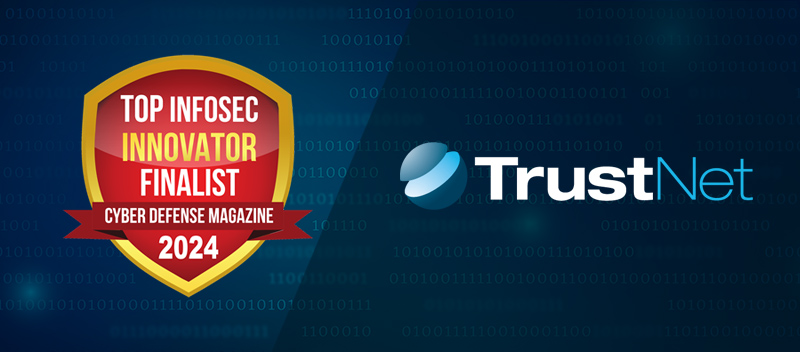
LAS VEGAS, NEVADA (CYBERDEFENSEWIRE) AUGUST 8, 2024 – TrustNet is proud to announce that during BlackHat USA 2024, we have been named a finalist for the following award from Cyber Defense Magazine (CDM), the industry’s leading electronic information security magazine: Since 2003, TrustNet has been at the forefront of cybersecurity and compliance, providing businesses worldwide with unparalleled protection and peace of mind. TrustNet’s innovative Triple A approach—Advisory, Audit, and Automation—ensures comprehensive safeguards against evolving threats, backed by its expert team with a client-first mindset and advanced solutions. Judging continues through October 2024, when winners will be announced online, in print, and during Cyber Defense Con 2024, taking place October 31 – November 1, 2024 in Orlando, Florida, USA, where a select group of winners will be given the opportunity to showcase their innovative solutions to the Top Global CISOs during their invitation-only conference at https://www.cisoconference.com. “We’re thrilled to receive this recognition in one of the most prestigious and coveted cybersecurity awards in the world from Cyber Defense Magazine, during their 12th anniversary as an independent cybersecurity news and information provider. We knew the competition would be tough and with top judges who are leading infosec experts from around the globe, we couldn’t be more pleased,” said Trevor Horwitz, Founder and CISO of TrustNet Inc. [/et_pb_text][et_pb_image src=”https://trustnetinc.com/wp-content/uploads/2024/09/top-infosec-finalist-badge-png-1.png” title_text=”top-infosec-finalist-badge-png-1″ align=”center” _builder_version=”4.25.0″ _module_preset=”default” width=”67%” global_colors_info=”{}”][/et_pb_image][et_pb_text quote_border_weight=”3px” quote_border_color=”gcid-c6a045ad-93f2-41aa-bea3-317846c80b16″ _builder_version=”4.25.0″ _module_preset=”default” text_font=”Hero New Regular|300|||||||” text_text_color=”gcid-f90447ab-4baa-4389-a89e-9e109c0034c2″ text_font_size=”16px” text_line_height=”1.9em” ul_line_height=”1.6em” quote_line_height=”2em” header_font=”Hero New Regular|700|||||||” header_2_line_height=”1.7em” header_4_line_height=”1.6em” custom_margin=”2em||||false|false” global_colors_info=”{%22gcid-f90447ab-4baa-4389-a89e-9e109c0034c2%22:%91%22text_text_color%22%93,%22gcid-c6a045ad-93f2-41aa-bea3-317846c80b16%22:%91%22quote_border_color%22%93}”] “TrustNet embodies three major features we judges look for with the potential to become winners: understanding tomorrow’s threats today, providing a cost-effective solution, and innovating in unexpected ways that can help mitigate cyber risk and get one step ahead of the next breach,” said Gary S. Miliefsky, Publisher of Cyber Defense Magazine. We’re thrilled to be a member of this coveted group of finalists in the Cyber Defense Awards. About TrustNet For mid-size and large organizations across multiple industries, TrustNet helps build trusted relationships with customers, partners, and employees by providing top-tier cybersecurity and compliance services. Unlike other service providers, we offer a comprehensive suite of managed security, consulting, and compliance solutions under one roof. Since 2003, we have been a strategic partner in ensuring the security and integrity of our clients’ businesses. Based in Atlanta, Georgia, we serve both public and private sectors in the United States and globally. TrustNet helps businesses navigate complex regulations and enhance data security through our expert compliance advisory and audit services. Our success stories include fortifying cybersecurity for Calendly, ensuring SOC 2 compliance for ExperiencePoint, fast-tracking audits for Canda Solutions, streamlining compliance for Certified Medical Consultants, and managing annual audits for Cervey. Clients have praised TrustNet’s impact, with David Haapalehto from ExperiencePoint stating, “This certification bolsters our clients’ confidence in our capacity to protect personal and organizational data,” and Chris Porter from Cervey noting, “TrustNet’s team makes the annual SOC 2 Type 2 audit process smooth and efficient.” These testimonials underscore TrustNet’s pivotal role in bolstering client confidence and safeguarding sensitive data. For more than 20 years, TrustNet has remained committed to providing our clients with expert compliance advisory and audit services. Be inspired by their journeys. Check out our clients’ success stories. About Cyber Defense Awards This is Cyber Defense Magazine’s twelfth year of honoring InfoSec innovators from around the Globe. Our submission requirements are for any startup, early stage, later stage, or public companies in the INFORMATION SECURITY (INFOSEC) space who believe they have a unique and compelling value proposition for their product or service. Learn more at www.cyberdefenseawards.com. About Cyber Defense Magazine Cyber Defense Magazine is the premier source of cyber security news and information for InfoSec professions in business and government. We are managed and published by and for ethical, honest, passionate information security professionals. Our mission is to share cutting-edge knowledge, real-world stories, and awards for the best ideas, products, and services in the information technology industry. We deliver electronic magazines every month online for free, as well as special editions exclusively for the RSA Conferences and Cyber Defense Conferences. CDM is a proud member of the Cyber Defense Media Group. Learn more about us by visiting the website, or Cyber Defense TV visit and Cyber Defense Radio to see and hear some of the most informative interviews of many of these award-winning company executives. Search for a Cybersecurity job or post an infosec job for free anytime. Join a webinar and realize that infosec knowledge is power. [et_pb_column type=”2_5″ _builder_version=”4.25.0″ _module_preset=”default” global_colors_info=”{}”][/et_pb_column][/et_pb_row][et_pb_row column_structure=”2_5,3_5″ module_id=”tn-post-content” _builder_version=”4.23.1″ _module_preset=”default” max_width=”1336px” module_alignment=”center” custom_margin=”-40px||||false|false” locked=”off” global_colors_info=”{}”][et_pb_column type=”2_5″ _builder_version=”4.23.1″ _module_preset=”default” global_colors_info=”{}”][et_pb_text _builder_version=”4.25.0″ _module_preset=”default” text_font=”Hero New Regular|300|||||||” text_text_color=”gcid-f90447ab-4baa-4389-a89e-9e109c0034c2″ text_line_height=”1.9em” header_font=”Hero New Regular|700|||||||” header_line_height=”1.5em” header_3_font=”||||||||” custom_margin=”20px|-150px|||false|false” global_colors_info=”{%22gcid-f90447ab-4baa-4389-a89e-9e109c0034c2%22:%91%22text_text_color%22%93}”] Ready to take your cybersecurity to the next level? TrustNet is here to guide you every step of the way. Talk to an expert today.


